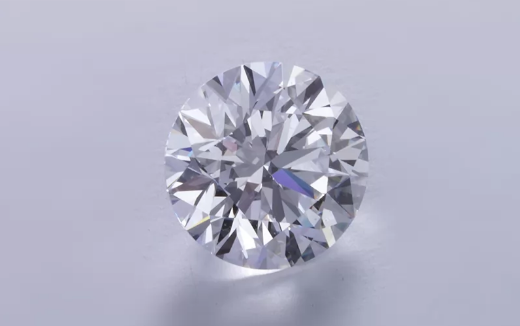The world of diamonds has been forever changed by the emergence of lab-grown diamonds. These marvels of science offer an ethical and sustainable alternative to traditional mined diamonds, but just like their natural counterparts, evaluating the quality of lab-grown diamonds is of utmost importance. In this comprehensive guide, we will delve into the key factors that determine the quality of lab-grown diamonds, empowering you to make informed decisions when acquiring these gems of the future.
1. The Four Cs: Carat, Cut, Color, and Clarity
Carat Weight
Carat weight refers to the size of the diamond and is often the first factor people consider. Lab-grown diamonds come in various carat weights, and your choice depends on your personal preference and budget. Keep in mind that a higher carat weight doesn't always mean better quality; other factors like cut, color, and clarity play a significant role.
Cut Quality
The cut of a diamond greatly affects its overall appearance and brilliance. The quality of the cut is determined by how well the diamond has been shaped and faceted. In lab-grown diamonds, just as in natural diamonds, the cut is graded from Excellent to Poor. A well-cut diamond will reflect light beautifully, making it sparkle and shine.
Color Grade
Diamonds are graded on a scale from D (colorless) to Z (light yellow or brown). The less color a diamond exhibits, the higher its grade. Lab-grown diamonds typically have fewer color variations than natural diamonds. However, preferences vary, and some may prefer a slightly warmer tone.
Clarity Grade
Clarity refers to the presence of internal and external flaws or inclusions in the diamond. Lab-grown diamonds are usually less included than natural diamonds, but it's still essential to consider the clarity grade. The scale ranges from Flawless to Included, with higher grades indicating fewer imperfections.

1.13CT D VVS2 HPHT IGI Lab Grown Diamond
2. Diamond Certification
When evaluating the quality of a lab-grown diamond, it's crucial to request a diamond certification. Reputable gemological laboratories, such as the Gemological Institute of America (GIA) or the International Gemological Institute (IGI), provide detailed reports that include information about the diamond's four Cs, as well as its dimensions and any identifying characteristics. These certificates verify the authenticity and quality of the diamond.
3. Diamond Shape and Symmetry
Beyond the four Cs, the shape and symmetry of a lab-grown diamond can significantly impact its beauty. Common diamond shapes include round, princess, emerald, and pear, among others. The symmetry of the facets and how well they align can affect the diamond's brilliance and sparkle.
4. Ethical and Environmental Considerations
One of the key advantages of lab-grown diamonds is their ethical and environmental footprint. When evaluating their quality, consider the source and the environmental practices of the manufacturer. Lab-grown diamonds are generally more sustainable and conflict-free than their mined counterparts.
5. Price Comparison
Lab-grown diamonds typically cost less than natural diamonds of the same quality. When evaluating the quality of a lab-grown diamond, it's essential to compare prices within the lab-grown diamond market. Be cautious of deals that seem too good to be true, as quality should always come first.
6. Durability and Hardness
Both lab-grown and natural diamonds are exceptionally durable and have a hardness of 10 on the Mohs scale. This means they are resistant to scratches and suitable for everyday wear. When evaluating a lab-grown diamond, you can have confidence in its durability.
7. Personal Preference
Ultimately, the quality of a lab-grown diamond is also influenced by your personal preferences. Some may prioritize size (carat weight), while others may favor brilliance and sparkle (cut quality). Your choice should reflect your style, budget, and what matters most to you.
Conclusion
Evaluating the quality of a lab-grown diamond involves considering the four Cs (carat, cut, color, and clarity), requesting a diamond certification, examining the shape and symmetry, and taking into account ethical and environmental factors. While lab-grown diamonds offer a more sustainable and affordable option, their quality should not be compromised. It's essential to make an informed decision based on your preferences and priorities, ensuring that your lab-grown diamond meets both your ethical and aesthetic standards.
By following these guidelines, you can confidently select a high-quality lab-grown diamond that not only sparkles brilliantly but also aligns with your values and desires.
Starsgem Co., Ltd. are a professional gemstones and jewelry manufacturer. We have over ten years in manufacturing high quality gemstones and natural gemstones. Such as moissanite, lab grown diamond, hydrothermal emerald,cubic zirconia, corundum, spinel, nano, glass ect.
If you want to explore more insights about diamonds and jewelry, visit [https://www.starsgem.com/contact-us/]


 Lab Grown Emerald
Lab Grown Emerald

